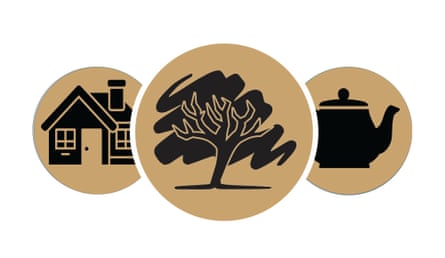Research based on a poll of 11,000 Reform UK supporters, the biggest survey of its kind, tells us more about who is intending to vote for the party than has been previously known.
The in-depth polling analysis from Hope Not Hate reveals a voter coalition that stretches from struggling workers and frustrated graduates to wealthy retirees, in places from Hitchin to Runcorn.
While immigration is often viewed as the defining issue for Reform supporters, the data shows a far more complex picture. This diverse coalition is deeply divided on big issues such as the economy, the climate crisis and the role of government.
The charts below, which are based on polling of 11,342 Reform supporters, show how Reform’s following cuts across age, class and geography, and reveal five distinct voter groups with sharply contrasting priorities. Together, they capture a movement united by anger and distrust yet divided over identity, economics and Britain’s direction.

Who are the Reform supporters?
The research divides them into five groups, based on their attitudes towards different issues. These groups are the “working right”, “hardline conservatives”, “squeezed stewards”, “contrarian youth” and “reluctant reformers”. They differ in some key ways.
Working right
26% of people who intend to vote Reform

Economically insecure and angry, these older working-age voters mix pro-worker attitudes with hostility towards immigration. They feel betrayed by elites, see immigrants as competitors for scarce resources and are the most loyal to Reform’s populist message.
Hardline conservatives
18%

Affluent, older and ideologically rightwing, this group is deeply anti-immigrant and socially conservative. They oppose workers’ rights and state spending. They generally resemble disillusioned Tory loyalists and traditionalists, but distrust climate action and are drawn to Nigel Farage.
Squeezed stewards
29%

Anxious, middle-income voters who are hostile to immigration yet care strongly about nature, fairness and local control. Feeling politically ignored, they mix cultural conservatism with environmental concern and want to see improvements on the cost of living.
Reluctant reformers
19%

The most moderate group, they back Reform out of frustration with mainstream politics rather than conviction. Pragmatic and fairness-driven, they value competence, stability and public services – especially the NHS. They are the most persuadable segment.
Contrarian youth
9%

Young, diverse and politically volatile, they combine cynicism, conspiracy thinking and flashes of optimism. Many distrust institutions but are open to new ideas, holding socially conservative gender views yet showing more tolerance on race and multiculturalism.
Group demographics
The polling reveals the diversity across the different voter groups the party may rely on. While half of the Reform voters surveyed are older than 55, groups such as the reluctant reformers and the contrarian youth skew younger.
Only two in five have degree-level qualifications or above, but this goes up to three in five among the contrarian youth group.
Reform supporters were also asked about their socioeconomic status. A third reported a pre-tax household income of less than £25,000 and half earned between £25,000 and £70,000. Thirteen per cent overall are in the upper income brackets, and this figure rises to 23% in the contrarian youth group.
A third (36%) of Reform supporters are desperate or worried about their finances. This is particularly true for the working right and contrarian youth groups.
Hardline conservatives have better hopes or consider themselves to be better off.

What does this mean for Reform’s policy platform?
The diversity of the party’s support base carries significant implications for policy.
One of the biggest tensions is between the working right, who generally are found in poorer towns and in northern constituencies, and hardline conservatives found in wealthier southern seats.
after newsletter promotion
For the working right, the cost of living crisis is the defining issue: 65% name it as a top concern, compared with 49% of hardline conservatives, who are more likely to focus on the economy in broader terms.
The sharpest split is over immigration and asylum. While three in five (58%) potential Reform voters see it as a key issue, that figure falls to just 20% among contrarian youth and soars to 77% among hardline conservatives – highlighting how Reform’s coalition blends economic populists, traditional conservatives and disaffected young voters under one uneasy banner.
When looking at broader attitudes, the polling exposes other splits within the coalition that could be hard for Farage to bridge.
While the reluctant reformers and contrarian youth tend to hold pro-immigration views, this stands in stark contrast to the hostility held by the rest of the coalition – especially the working right.
A similar faultline appears on the climate crisis. The squeezed stewards broadly support action on climate change, while hardline conservatives are among the most sceptical, often rejecting the idea of human-driven global heating altogether.
On workers’ rights, the gulf is just as wide. The working right are strongly in favour of better pay and protections, while hardline conservatives opposed most pro-worker policies.
The analysts point to how this data underlines the tensions between Reform’s economically populist and free market wings.

Looking ahead to the election
The analysis also maps where these supporters are concentrated across the country, and compares it with their current voting intention.
Reform’s core base, the working right, is based across post-industrial and coastal constituencies in the north and east of England, especially outside big cities. These voters, often economically insecure and alienated from Westminster, make Reform a serious threat in “red wall” seats where even small shifts in turnout could upend tight races.
The hardline conservatives and squeezed stewards anchor Reform’s support further south, in rural, coastal and commuter-belt areas stretching from the Midlands to Kent and Wales.
Their presence signals that Reform’s popularity is not just a northern revolt but a dual challenge for establishment parties: it is peeling off disillusioned working-class voters from Labour while eating into the Tories’ traditional heartlands with a blend of populist anger and cultural conservatism.
The maps below show how working-right voters account for up to 40% of projected Reform backers in some north-west seats in England, but in areas of the south-east the hardline conservatives form more than a third.
The report also found 301 constituencies where the number of squeezed stewards alone – both those who voted Reform previously and new voters – exceeds the margin the party would need to overturn to win the seat at the next election.
There are 264 seats where the working right outnumber that majority, and 207 where the hardline conservatives do – showing how even small shifts in these groups’ support could prove decisive in dozens of tightly fought contests.
You can search the table below to find out how many of these Reform voters are in each constituency, as well as the results forecast from the MRP modelling for Hope Not Hate.

Will squeezed stewards decide whether there is a Reform majority?
The biggest group in the party’s voter makeup is the squeezed stewards, comprising 29% of all Reform backers. The voters in this group share some values on immigration but they are also anxious about the cost of living, the future and have a concern for nature.
Squeezed stewards mostly switched from the Conservatives to Reform in the 2019 or 2024 general elections. There are also voters who switched from Labour in 2024.
Some of these voters live in constituencies that are forecast to have tight margins if an election were to happen tomorrow, so their vote could decide whether those seats turn to Reform or another party that appeals to their concerns.
There are 20 seats with more than 35% of Reform voters being squeezed stewards and a margin of under 10%. These include Hitchin (forecast Labour win with a margin of 0.33%), Brighton Kemptown and Peacehaven (Reform margin 1%) and Dwyfor Meirionnydd (Reform margin 2%).
Anki Deo, who leads the policy and insights team at Hope Not Hate, says that in “an era of hyper-marginal politics where election results are decided by just a few percentage points”, identifying these groups and where they live is crucial.
She adds: “For those of us desperate to prevent a Farage-led government in 2029, this research shows us that not all is lost. Reform UK voters do not fit a single profile or ideology. Far from a homogenous group, it is a broad coalition, with many voters having quite different and contradictory views from each other.
“Somewhat bizarrely, the rise of Reform UK is often viewed almost exclusively through the prism of immigration. But our polling shows that these voters are also deeply concerned about financial insecurity and economic inequality. For some Reform UK voters, the cost of living is twice as important as immigration.
“This is why improving our economy and public services, focusing on workers’ rights and defending multiculturalism are the most effective ways to not only fight the far right but win elections.”
MethodologyThe survey and segmentation conducted by Hope Not Hate was based on a sample of 11,342 people who said they would vote for Reform if there was a general election tomorrow. This sample was taken from a national poll of 43,335 people conducted by Focaldata on behalf of Hope Not Hate between 1 August and 11 September 2025.
The poll was weighted to be nationally representative using 2021 census data on age, gender, region and education, as well as the 2024 general election vote.
The segment proportion by constituency used for the table and map was calculated from that sample, but the proportion predicted for Reform and the margin of the seat were calculated from the voting intention of the widest sample of 43,335 people.
The people were grouped together into segments using multidimensional factor analysis to group questions by theme and developing indexes that place individual respondents along an axis that represents polarisation of opinions, along with Gaussian mixed modelling to identify clusters of respondents who share similar political values and attitudes based on the factors.

 2 hours ago
7
2 hours ago
7

















































